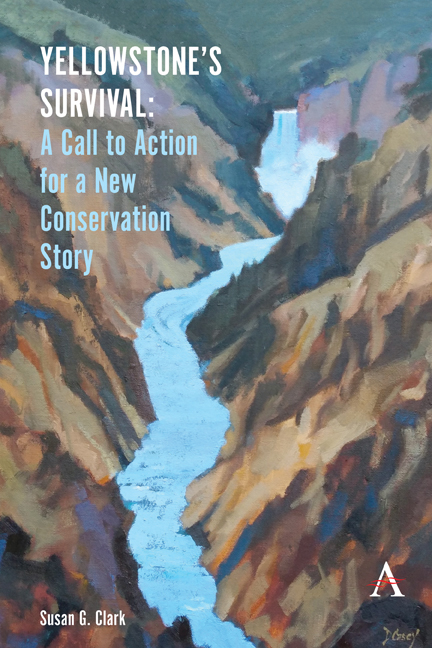 Yellowstone's Survival - A Call to Action for a New Conservation Story
Yellowstone's Survival - A Call to Action for a New Conservation Story Published online by Cambridge University Press: 22 May 2021
It is clear […] that the fate of humankind [and nature] increasingly depend
on what humans do, and in turn, it depend[s] on their
images of the future– – their visions of preferable, possible, and probable
futures (and today I would add preventable futures), as well as their ability
to design effective actions to achieve their preferable future
and to avoid undesirable futures.
The US Congress passed the Wilderness Act in 1964 committing us to the value of preserving areas “of the earth and its community of life [that are] untrammeled by man, where man himself is a visitor who does not remain.” Designated wilderness areas were to be managed in such a way to leave them unimpaired as wilderness for the American people. Although little of Greater Yellowstone is formally designated Wilderness, much of it is of a wilderness quality. The Wilderness Act stated clearly that they are to be preserved as wilderness and for the gathering and dissemination of information regarding their use and enjoyment as wilderness. There are several official wildernesses in the GYE (e.g., Jediahiah Smith, Gros Ventre, Teton, Washakie, Absaroka). They are managed by the National Park Service, Forest Service, and Bureau of Land Management and other government agencies depending on where they are. Importantly, the Act laid out a process for the long-term study and additional official wilderness designations. Two such wilderness study areas (WSAs) are south of Jackson, Wyoming– – the Palisades and Shoal Creek Wilderness Study Areas.
The fate of these two WSAs, each several tens of thousands of acres, was deliberated for two years by citizens and officials in Teton County, Wyoming. By the fall of 2018, there was little agreement on what to do despite formally designed and facilitated workshops and the investment of thousands of person-hours and tens of thousands of taxpayer dollars. Finally, the news headlines said it all: “County gives up on land initiative: No recommendation coming from commissioners on new wilderness.” Perhaps this effort failed to secure an integrated outcome in the best interests of people involved because the wrong “problem-solving” design and facilitation process was used. Perhaps it failed because the interests, knowledge, and skills of people involved were not up to the task asked of them. Or perhaps, other factors caused it to fail.
To save this book to your Kindle, first ensure no-reply@cambridge.org is added to your Approved Personal Document E-mail List under your Personal Document Settings on the Manage Your Content and Devices page of your Amazon account. Then enter the ‘name’ part of your Kindle email address below. Find out more about saving to your Kindle.
Note you can select to save to either the @free.kindle.com or @kindle.com variations. ‘@free.kindle.com’ emails are free but can only be saved to your device when it is connected to wi-fi. ‘@kindle.com’ emails can be delivered even when you are not connected to wi-fi, but note that service fees apply.
Find out more about the Kindle Personal Document Service.
To save content items to your account, please confirm that you agree to abide by our usage policies. If this is the first time you use this feature, you will be asked to authorise Cambridge Core to connect with your account. Find out more about saving content to Dropbox.
To save content items to your account, please confirm that you agree to abide by our usage policies. If this is the first time you use this feature, you will be asked to authorise Cambridge Core to connect with your account. Find out more about saving content to Google Drive.